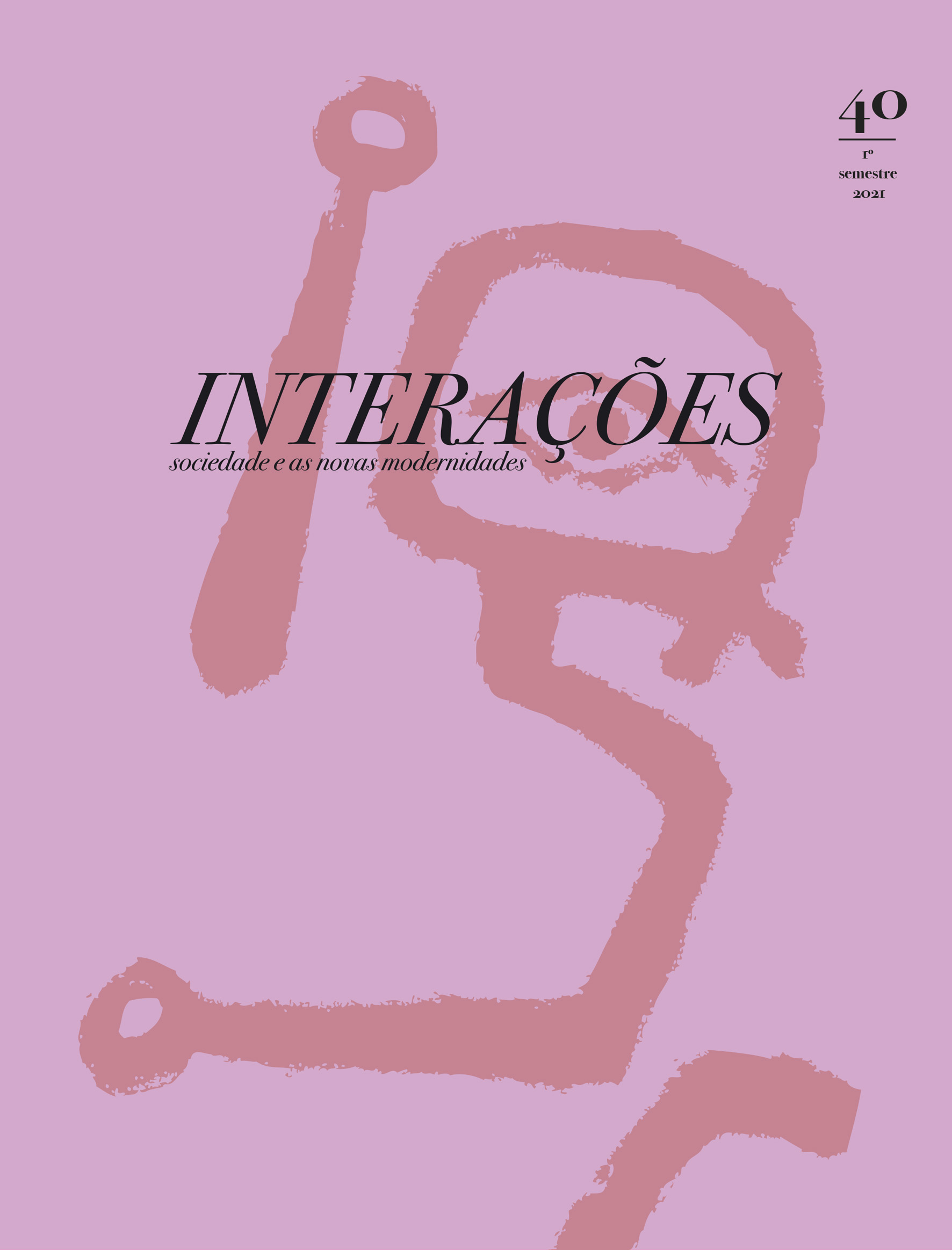Learning from Lisbon Or, how postmodernism conquered Portugal
DOI:
https://doi.org/10.31211/interacoes.n40.2021.a5Keywords:
Postmodernism, Architecture, Urban history, Lisbon, PortugalAbstract
The Amoreiras shopping centre in Lisbon is an icon of Portuguese postmodernism. When it first opened in 1985, its kitsch design stood out conspicuously amidst a landscape of smart Pombaline shopping streets, social housing tower blocks and tourist-friendly houses clad in "traditional" azulejo tiles. But it also reflected a pivotal moment in Portuguese history and still stands today as a reminder of the consumerist aspirations of post-revolutionary Portugal, the neoliberal policies that have come to dominate life in many Western nations and the stark contradictions of global capitalism. Departing from an initial discussion of Amoreiras, this short essay critically explores recent transformations to Lisbon’s urban and architectural landscape and traces their political and economic origins. In so doing, it suggests ways in which postmodernism might be considered a relevant concept for describing contemporary Portuguese society.
Downloads
References
Amoreiras Shopping Center. (n.d.). About. Retrieved October 1, 2020, from https://amoreiras.com/en/about
Baklanoff, E. N. (1992). The Political Economy of Portugal’s Later “Estado Novo”: A Critique of the Stagnation Thesis. Luso-Brazilian Review, 29 (1), 1–17.
Broadbent, G. (1990). Introduction. In Tomás Taveira. Academy Press/St. Martin’s Press.
Cardim, J. (2013). The role of shopping malls in shaping the Lisbon Metropolitan Area: The Amoreiras Shopping Center case study. Revista Lusófona de Arquitectura e Educação, 8–9, 145–169.
Carvalho, R. A. (2018). Ideology and architecture in the Portuguese “Estado Novo”: Cultural innovation within a para-fascist state (1932–1945). Fascism, 7, 141–174. https://doi.org/10.1163/22116257-00702002
Castells, M. (1977). The urban question: a Marxist approach. Edward Arnold.
Cocola-Gant, A & Gago, A. (2019). Airbnb, buy-to-let investment and tourism-driven displacement: A case study in Lisbon. EPA: Economy and Space, 0(0), 1–18.
Debord, G. (2005). Society of the spectacle. Rebel Press.
European Union. (2014). The economic adjustment programme for Portugal 2011–2014. https://ec.europa.eu/economy_finance/publications/occasional_paper/2014/pdf/ocp202_en.pdf
Harvey, D. (1992). The condition of postmodernity: an enquiry into the origins of cultural change. Blackwell.
Jencks, C. (1978). The language of post-modern architecture (2nd ed.). Academy Press.
Lestegás, I. (2019). Lisbon After the Crisis: From Credit‐fuelled Suburbanization to Tourist‐driven Gentrification. International Journal of Urban and Regional Research, 43(4), 705–723. https://doi.org/10.1111/1468-2427.12826
Lund Hansen, A. (2003). Rescaling of the commercial property market and changing urban governance in Lisbon. Géocarrefour, 78(4), 301–312. https://doi.org/10.4000/geocarrefour.362
Lyotard, J.-F. (1984). The postmodern condition: a report on knowledge. University of Minnesota Press.
Ritzer, G. (2010). Enchanting a disenchanted world: Continuity and change in the cathedrals of consumption. Pine Forge Press.
Soja, E. (2000). Postmetropolis: critical studies of cities and regions. Blackwell.
Taveira, T. (2002). Interview: Tomás Taveira talks to Maggie Toy. In Tomás Taveira. Artmedia Press.
Tulumello, S. (2015). Reconsidering neoliberal urban planning in times of crisis: urban regeneration policy in a “dense” space in Lisbon. Urban Geography, 37(1), 117–140. https://doi.org/10.1080/02723638.2015.1056605
Urry, J. (2002). The tourist gaze (2nd ed.). Sage.
World Travel & Tourism Council. (2018). Travel and tourism economic impact 2018 Portugal. https://www.sgeconomia.gov.pt/ficheiros-externos-sg/wttc_portugal2018-pdf.aspx
Downloads
Published
How to Cite
Issue
Section
License
Copyright (c) 2021 Reuben Connolly Ross

This work is licensed under a Creative Commons Attribution-NonCommercial 4.0 International License.
The copyright of published works is retained by the author who grants Interações the original publication right. The published article can be used freely for educational, non-commercial purposes, in accordance with the Creative Commons License - Attribution-Non-Commercial 4.0 International, provided that the author, the title of the article, the title and number of the journal are cited together with the URL or DOI of the article.



